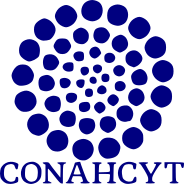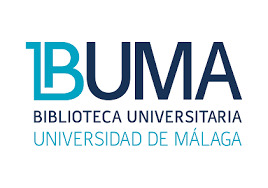Morphoanatomy, histochemistry and germination of the seeds of Mammillaria parkinsonii Ehrenb. (CACTACEAE)
DOI:
https://doi.org/10.18387/polibotanica.53.8Keywords:
Cactaceae, dorsal ridge, embryo, exotestal seed coat, protein bodies and globoid crystal.Abstract
The present study is a contribution to the knowledge of the morpho-anatomy, histochemistry and germination of Mammillaria parkinsonii seeds from a population in Tolimán, Querétaro characterized by a high diversity of cacti. For the anatomical and histochemical description, twenty seeds randomly selected were processed using standard protocols for scanning electron microscopy and light microscopy and to obtain permanent and semi-permanent slides. For germination study 210 seeds were sown in Petri dishes on agar, with six replicas and to obtain weight and size 50 seeds randomly selected were used. The results show that the seed coat is formed by a non-striated cuticle with pectins. The exotesta occupies 6.8% of the total volume of the seed, it has lignified-suberized and protein-containing anticline walls, forming U-type undulations with protrusions. The endotegmen is suberized and an embryonic membrane without ergastic contents surrounds the embryo. The endosperm is confined to a dorsal ridge. The embryo is globose, with two cotyledonous protrusions, and the hypocotyl assumes the nutritional reserve function with mainly protein bodies and globoids crystals in its cells. The micropylar hilum region is small and oval, made up of non-lignified parenchyma. Germination started on day 5th and ended on day 29th, with a mean germination time on day 9th. The final germination percentage was 74.29%. The age, seed size, protein and lipid reserve as well as germination percentage, suggest an orthodox potentiality to form soil seed banks in a desert habitat. Mammillaria parkinsonii is an endemic species of Mexico, protected by NOM-059-SEMARNAT-2010 in a special category (Pr).
References
Arias, S., & Terrazas, T. (2004). Seed morphology and variation in the genus Pachycereus (Cactaceae). Journal of Plant Research, 117(4), 277–289. https://doi.org/10.1007/s10265-004-0156-4
Arroyo-Cosultchi, G., Terrazas, T., Arias, S., & Arreola-Nava, H. J. (2006). The systematic significance of seed morphology in Stenocereus (Cactaceae). TAXON, 55(4), 983–992. https://doi.org/10.2307/25065693
Arroyo-Cosultchi, G., Terrazas, T., Arias, S., & López-Mata, L. (2007). Morfología de la semilla en Neobuxbaumia (Cactaceae). Botanical Sciences, 25(81), 17. https://doi.org/10.17129/botsci.1762
Arroyo-Pérez, E., González-Salvatierra, C., Matias-Palafox, M. L., & Jiménez-Sierra, C. L. (2017). High tolerance to high-light conditions for the protected species Ariocarpus kotschoubeyanus (Cactaceae). Conservation Physiology., 5(1), 1–7.
Arroyo-Pérez, E., Jiménez-Sierra, C. ., Hurtado-Zavala, J. ., & Flores, J. (2021). Shared pollinators and sequential flowering phenologies in two sympatric cactus species. Plant Ecology, 154(1), 28–38.
Arroyo-Pérez, E., Jiménez-Sierra, C. L., Zavala-Hurtado, J. A., Flores-Rivas, J., & Salgado-Ugarte, I. H. (2019). Fenología, sincronía floral y éxito reproductivo de Neolloydia conoidea (Cactaceae). Botanical Sciences, 97(4), 579–587.
Barrios, D., Sánchez, J. A., Flores, J., & Jurado, E. (2020). RASGOS SEMINALES Y GERMINACIÓN EN LA FAMILIA CACTACEAE: UNA REVISIÓN EN LAS AMÉRICAS. Botanical Sciences, 98(3), 417–440. https://doi.org/10.17129/botsci.2501
Barthlott, W., & Hunt, D. (2000). Seed diversity in the Cactaceae subfamily Cactoideae. Succ. Pl. Res, 5, 1–173.
Barthlott, W., & Voit, G. (1979). Mikromorphologie der Samenschalen und Taxonomie der Cactaceae: Ein raster-elektronenmikroskopischer Überblick. Plant Syst Evol, 132, 205–229.
Bayona, C. A. (2016). Los suelos en el estado de Querétaro. In In: Jones RW, Serrano CV, eds. Historia Natural de Querétaro. (p. 667).
Bozzola, J. J., & Russell, L. D. (1999). Electron Microscopy: Principles and Techniques for Biologists. Jones and Bartlett Learning.
Bravo-Hollis, H., & Sánchez-Mejorada, H. (1991). Las cactáceas de México Volumen I. Universidad Nacional Autónoma de México.
Bregman, R., & Bouman, F. (1983). Seed germination in Cactaceae. Botanical Journal of the Linnean Society, 86, 357–374.
CITES. (n.d.). Convención sobre el Comercio Internacional de Especies Amenazadas de Fauna y Flora Silvestre. Retrieved March 25, 2021, from https://cites.org/esp/disc/text.php
CONAGUA Comisión Nacional del Agua. (2010). Información climatológica por estado. https://smn.conagua.gob.mx/es/informacion-climatologica-por-estado?estado=qro
González-Medrano, F. G. (2012). Las Zonas Áridas y Semiáridas de México y su Vegetación. Instituto Nacional de Ecología.
Guevara, F. P. (2019). Un viaje alrededor de la semilla. Universidad Nacional Autónoma de México.
Hernández-García, G., & Hernández-Villanueva, E. (1991). Anatomía comparada de óvulos y semillas de dos especies del género Mammillaria (Cactaceae). Bol. Soc. Bot. México, 51, 25–38.
Hernández, H. M., & Gómez-Hinostrosa, C. (2015). Mapping the cacti of Mexico. II. Mammillaria. Succulent Plant Research.
Jiménez-Durán, K., Arias Montes, S., Cortés-Palomec, A., & Márquez-Guzmán, J. (2014). Embryology and seed development in Pereskia lichnidiflora (Cactaceae). Haseltonia, 19, 3–12.
Jiménez, G. (2016). Demografía de Mammillaria parkinsonii Ehrenberg 1980 (Cactaceae) en la localidad Agua del Ángel en el municipio de Peñamiller, Querétaro, México. Universidad Nacional Autónoma de México, México.
Krishnamurty, K. V. (1988). Methods in plant histochemistry. S. Viswanathan.
Leishman, M. I., Wright, J., Moles, A. T., & Westoby, M. (2000). The Evolutionary Ecology of Seed Size. In F. M (Ed.), The Ecology of Regeneration in Plant Communities (2nd ed., pp. 31–57). Cabi.
López-Godínez, V. (2009). Estudio Preeliminar de la morfología de semillas del género Mammillaria. Universidad Nacional Autónoma de México, México.
Lux, A., Mikuš, M., Hanáčková, Z., & Krištín, J. (1994). Radicle of Echinocactus platyacanthus (Cactaceae). Plant and Soil, 167(1), 17–21. https://doi.org/10.1007/BF01587593
Maguire, J. D. (1962). Speed of germination aid in selection and evaluation for seedling emergence and vigor. Crop Sci, 2, 176–177.
Maiti, R. K., Hernández-Piñero, J. L., & Valdez- Marroquín, M. (1994). Ultraesrtructure and germination of some species of Cactaceae. Phyton, 55, 97–105.
Matilla, A. J. (2008). Desarrollo y germinación de las semillas. In Azcón-Bieto, J. y Talón, M. Fundamentos de Fisiología Vegetal (2013th ed.). McGRAW-HILL - Interamericana de España, S. L.
Núñez-Mariel, C., Engleman, E, M., & Márquez-Guzmán, J. (2001). Embriología de Pachycereus militaris (Audot) Hunt (Cactaceae). Bol. Soc. Bot. México, 51, 25–38.
Orozco-Segovia, A., Marquez-Guzman, J., Sanchez-Coronado, M. E., Gamboa de Buen, A., Baskin, J. M., & Baskin, C. C. (2007). Seed Anatomy and Water Uptake in Relation to Seed Dormancy in Opuntia tomentosa (Cactaceae, Opuntioideae). Annals of Botany, 99(4), 581–592. https://doi.org/10.1093/aob/mcm001
QGIS Development Team. (2020). QGIS Geographic Information System. Geographic Information System. Version 3.16. Open Source Geospatial Foundation. Available from Https://Qgis.Org [Accessed 3 Jun. 2020].
Reyes, J. (2009). Conservación y restauración de cactáceas y otras plantas suculentas mexicanas. Manual práctico, SEMARNAT. CONAFOR.
Rojas-Aréchiga, M. (2012). La importancia de la semilla en Cactaceae para estudios taxonómicos y filogenéticos. Boletín de La Sociedad Latinoamericana y Del Caribe de Cactáceas y Otras Suculentas, 9(3), 15–18.
Rojas-Aréchiga, M. (2014). Patrones de respuesta fotoblástica en semillas de cactáceas: un enfoque ecológico y filogenético. Universidad Autónoma Metropolitana.
Rojas-Aréchiga, M., & Batis, A. I. (2001). Las semillas de cactáceas ... ¿forman bancos en el suelo? In Cactáceas y Suculentas Mexicanas (Vol. 46, Issue 4, pp. 76–82).
Rojas-Aréchiga, M., Mandujano, M. C., & Golubov, J. K. (2013). Seed size and photoblastism in species belonging to tribe Cacteae (Cactaceae). Journal of Plant Research, 126(3), 373–386. https://doi.org/10.1007/s10265-012-0526-2
Rojas-Aréchiga, M., & Vázquez-Yanes, C. (2000). Cactus seed germination : a review. Journal of Arid Environments, 44, 85–104.
Ruzin, S. E. (1999). Plant microtechnique and microscopy. Oxford University Press.
Sánchez-Salas, J., Flores, J., & Martínez-García, E. (2006). Efecto del tamaño de semilla en la germinación de Astrophytum myriostigma LEMAIRE. (CACTACEAE), especie amenazada de extinción. Interciencia, 31(May), 371–375.
Sánchez-Salas, J., Flores, J., Muro-Pérez, G., Arias-Montes, S., & Jurado, E. (2015). Morfometría de Semillas en la Cactácea amenazada de extinción Astrophytum Myriostigma Lemaire. Polibotanica, 39, 119–131. https://doi.org/10.18387/polibotanica.39.7
Sánchez-Salas, J., Jurado, E., Flores, J., Estrada-Castillón, E., & Muro-Pérez, G. (2012). Desert species adapted for dispersal and germination during floods: Experimental evidence in two Astrophytum species (Cactaceae). Flora: Morphology, Distribution, Functional Ecology of Plants, 207(10), 707–711. https://doi.org/10.1016/j.flora.2012.08.002
Schindelin, J., Arganda-Carreras, I., & Frise, E. (2012). Fiji: an open-source platform for biological-image analysis. Nature Methods, 9(7), 676–682.
SEMARNAT. (2010). Protección ambiental. Especies nativas de México de flora y fauna silvestres. Categorías de Riesgo y especificaciones para su inclusión, exclusión o cambio. Lista de especies en riesgo. Diario Oficial de la Federación 30 Diciembre 2010, México.
Serna-Navarrete-L. (2007). Caracterización morfológica de la semilla y germinación de Mammillaria densispina (J.M. Coult.) Oreutt (Cactaceae). Universidad Nacional Autónoma de México.
Singh, G. (1999). Plant Systematics. Science Publishers, Inc.
Torres Díaz, E. (2018). Germinación y Morfometría de Mammillaria Bocasana. Universidad Nacional Autónoma de México.
UICN. (2013). Lista Roja de Especies Amenazadas de la UICN. http://www.iucnredlist.org.
Autor. (2016). Efecto del tamaño de las semillas en la germinación y supervivencia de las plántulas de dos especies de cactáceas. Universidad Autónoma Metropolitana.
Zamudio, S., & Guzmán, U. (2017). Dos especies nuevas de Mammillaria (CACTACEAE) del centro de México. Polibotánica, 44, 1–10.
Additional Files
Published
Issue
Section
License

Polibotánica by Departamento de Botánica de la Escuela Nacional de Ciencias Biológicas del Instituto Politécnico Nacional se distribuye bajo una Licencia Creative Commons Atribución-NoComercial-CompartirIgual 4.0 Internacional.




















